Most newbies at cooking I know for some reason always go for a pasta dish, so how to cook pasta is really high on their list of how-tos. This is perhaps because pasta dishes seem easy and quick to put together and the fact that there are a lot of pasta recipes out there that are awesome-looking to present on the table.
That said, it’s expected that nailing how to cook pasta is quite a priority – especially when you love eating carbs. And while you may think it’s as simple as throwing pasta in a boiling pot of water (which is basically what it is), you should also keep in mind that pasta can make or break your pasta dish. I mean in as much as I know people who like their pasta cooked through (a little overcooked for my taste though), I’m pretty sure even they wouldn’t enjoy mushy pasta.
And for sure, you wouldn’t want to ruin your beautiful sauce (especially if it took you hours to make) to go to waste because you didn’t know how to cook pasta. And you also don’t want to make it inadvertently salty because you ‘seasoned’ your pasta water with too much salt. And what about oil, you’ve probably heard of it – put oil in pasta water to prevent it from sticking. But does it really need oil? Should you really add oil?
Well, worry not because we’ll be going to break it down here so you don’t have to stress over how to cook pasta and concentrate instead on making those delicious pasta sauces.
Related Read: Different Pasta Names and What You Can Do with Them
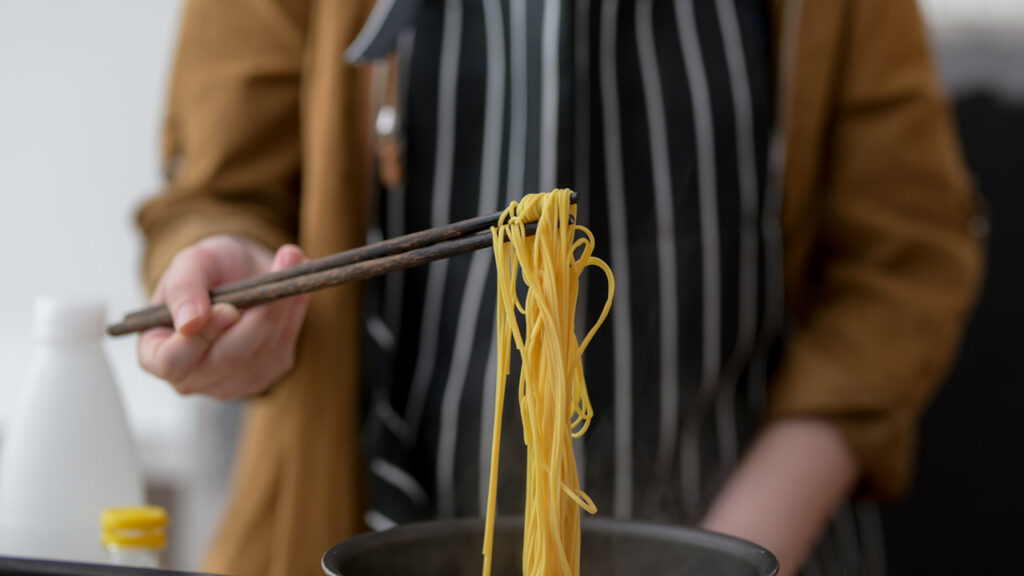
How to Cook Pasta
For ingredients, you’ll need:
- pasta
- water
- salt
And this is how you’ll easily cook pasta:
- First off, choose a big pot – that is of course depending on how much pasta you will be cooking. Keep in mind that you’ll be needing about 4 quarts of water for every pound of pasta. So, you want a pot that can accommodate that much water with plenty of room for your pasta to swirl around.
- After filling your pot with water, wait for it to boil. You need a rolling boil so really crank up the heat. Keep your pot covered so it boils more quickly. And only add the salt once it is starting to boil – you’ll need about one tablespoon for 4 quarts of water.
(If by any chance, your sauce turned out a bit on the salty side and you can no longer remedy it, you can surely adjust the salt in your pasta water to counter-react that.)
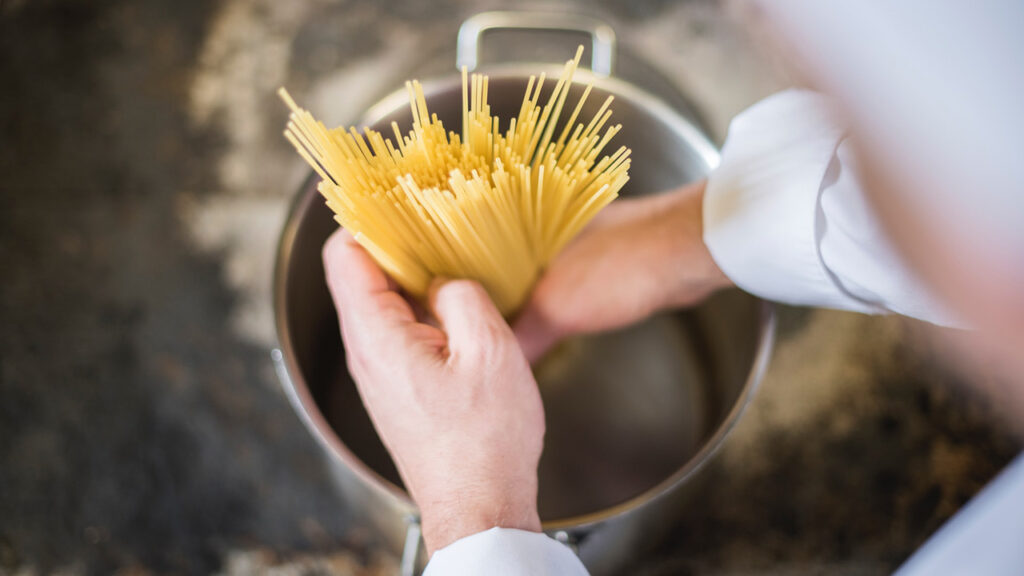
- Now once it’s boiling, add your pasta. Stir it occasionally to prevent it from sticking – no need to add oil. Some cooks may say that oil will prevent the pasta from sticking – from experience, it doesn’t do much really, you’ll still end up with clumped pasta if you let it sit on the counter for too long. And honestly, too, won’t the oil in your pasta work to your disadvantage if you’re aim is to make the sauce cling to it?
- As to how long should you boil your pasta. That will depend. If you’re using dried pasta, refer to the packaging but make sure to check before the max time indicated in the package. If it says 8-10 minutes, for sure check doneness once it hits 8 minutes. For fresh pasta, most won’t even take 5 minutes to cook, so for sure, check doneness once you hit 3 minutes.
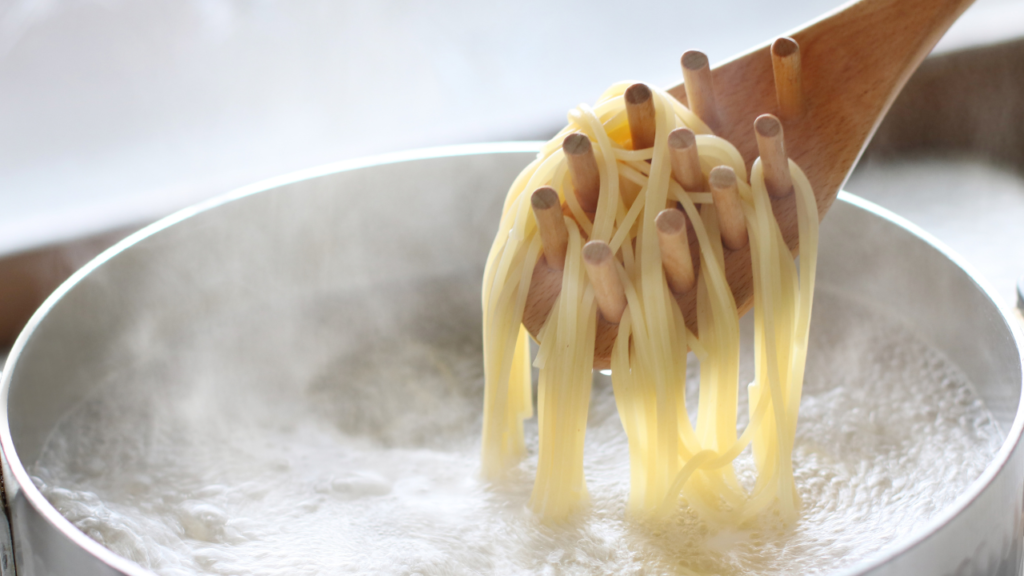
- What exactly are you looking for? You want a certain bite to it – if it’s too hard still then it’s still raw and if it’s soft, well you’re close to overcooking it. If the latter is the case, take it immediately off the heat and drain the pasta water. If it’s the former, let it boil for a few more minutes.
Quick tip: Growing up, I was told that to check if pasta is done, simply throw a strand straight to the wall – if it sticks, then it’s cooked (if it simply bounced off then you need to cook it further). I was actually doing this even well into my early twenties until I, well, eventually had the hang of it and can tell if pasta is cooked simply by pinching or biting into it. So, yes, soon enough you’ll be a pro and will ace how to cook pasta, too.
- Don’t forget to save some of the pasta water, you can use it to thin your sauce. It’s better than just adding water because it has some of the starch from the pasta. Keep in mind though that it’s seasoned with salt. Pasta water is also great if you’re planning to cook your pasta all the way through in your saucepan. I actually love doing this, I cook my just pasta al dente (pasta is still quite firm when bitten) and give it 2 or 3 minutes more to cook (with some of the pasta water) with my sauce.
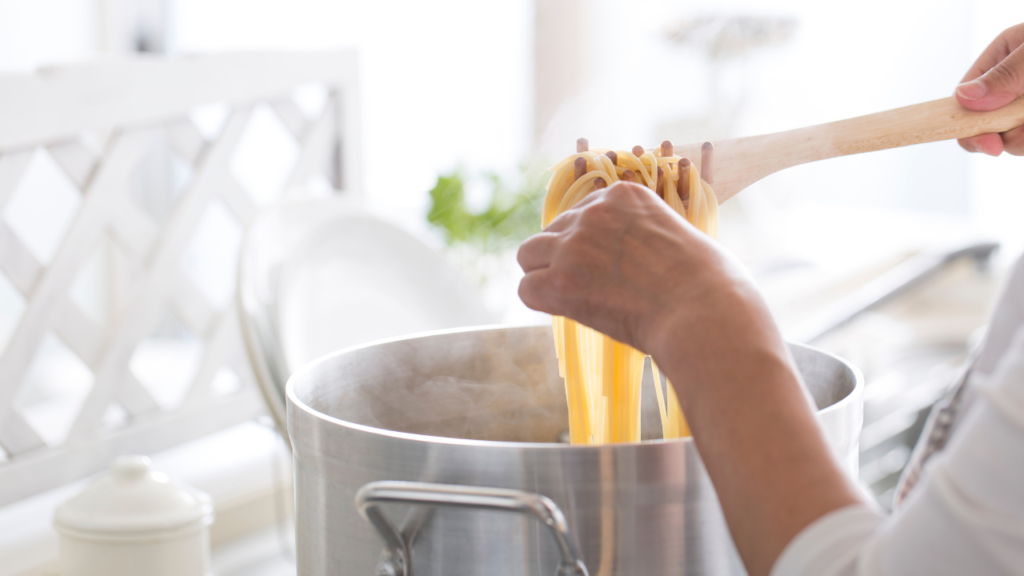
- Once the pasta is cooked and you’ve drained it of pasta water – ideally, you should add it to your sauce and serve while piping hot.
If let’s say you’re saving it for later, I suggest you make serving-sized portions and keep them in separate containers – that way, you’ll only heat up just enough pasta and not the entire batch. To heat up, simply throw it in your sauce in a pan. Or in my case, I like to give it about a minute or less in the microwave (after adding a little hot water, say about a tablespoon of water), then I simply add the sauce.
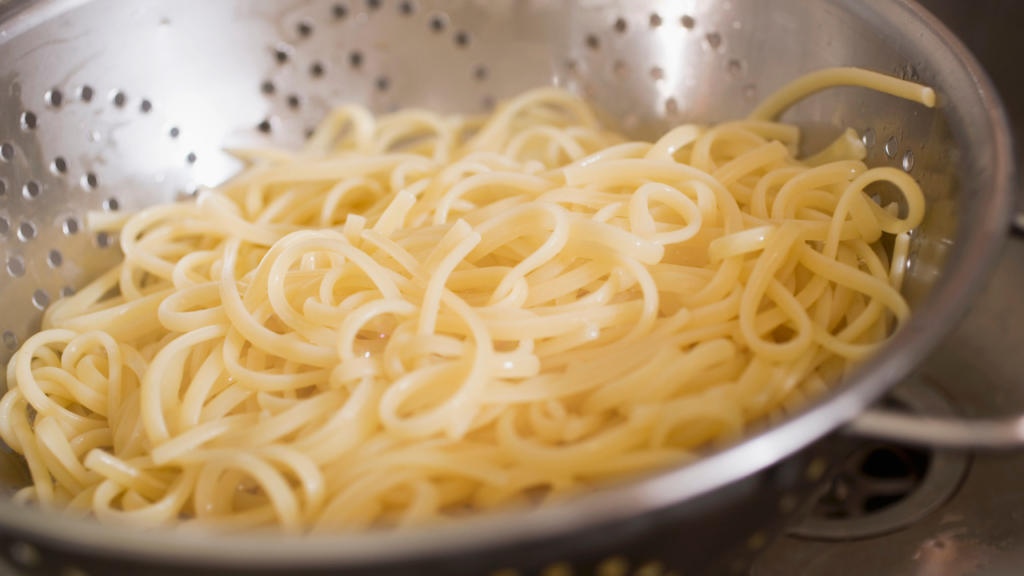
So, what do you think, pretty easy right? Don’t get intimidated and surely don’t feel bad if you mess up a batch or two – remember that it’s all a learning process (although it will be great of course if you can avoid common pitfalls, right?).
I had my own share of overcooked pasta in the past, too. I remember one time in my effort to save it, after immediately draining the pasta water, I dunk it in a container with tap water. My thought process was to stop it from further cooking from residual heat. It did work though – well, sort of, I’m pretty sure I did wash away the starch and most probably dull its taste, too, lol!
Undercooked pasta is actually easier to remedy – just cook it further for a few more minutes. If for some reason, you have already drained the pasta water (yep, that’s me, too). Just put it back in the pot and add hot water. It doesn’t have to be ‘a lot’ of water (as if you’re just starting to cook it), just enough that you can still give it a good stirring will work just fine (I know. Because been there, done that, too!).
Overall, the only way that you will ace how to cook pasta is if you’ll keep on trying it yourself. And there’s no shame in using a kitchen timer, or checking it every five minutes or so (I know, antsy newbie – again, been there done that), throwing it to the wall, or whatever technique you may have picked here and there. You’ll get the hang of it eventually and before you knew it, you’ll be just eyeballing water and won’t even need a timer to nail that al dente pasta!




